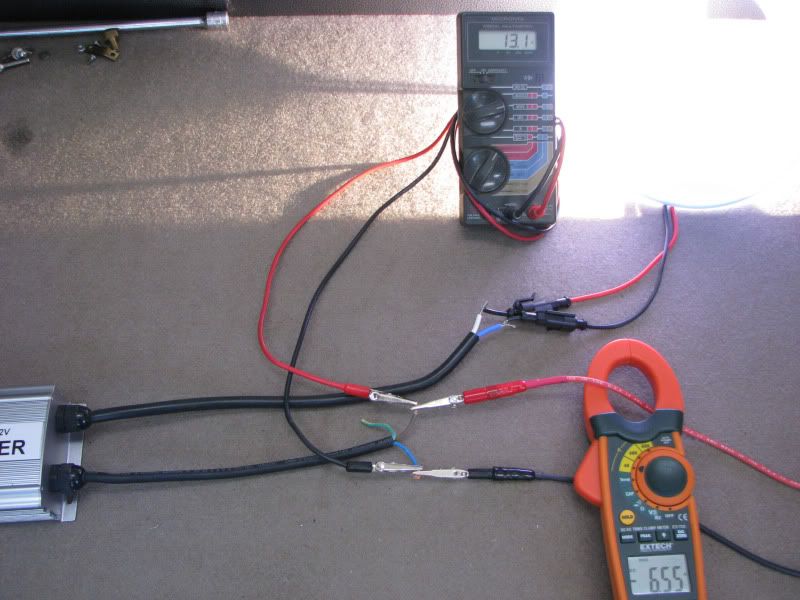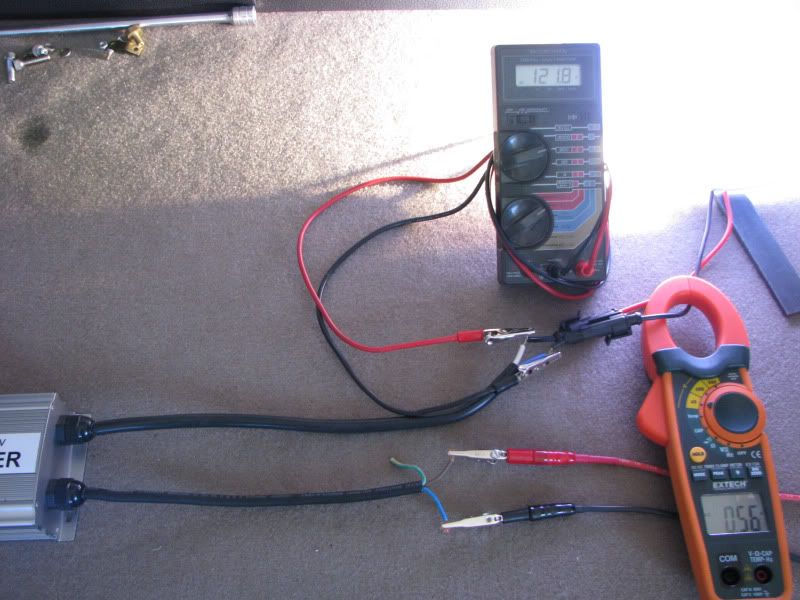For those interested, I've taken some pics of my basic method of testing for ballast input power consumption and actual Watts to the bulb.
Red and black wires in lower right are coming from my 30 Volt/50 Amp variable power supply. One thing I did not show...The gray meter I'm using to measure Volts during the "power to the bulb" measurement does not measure as high as 25,000 to 35,000 KV so I have to keep one of the leads disconnected at the meter until after initial startup (2 seconds is fine). Orange inductive clamp meter is reading Amps.
In both pictures, Volts x's Amps = Watts.
Ballast Input Watts: 13.1 Volts x's 6.55 Amps = 85.8 Watts

Watts to the bulb: This ballast puts out AC power to the bulb so the Orange meter is switched to AC Amps. 121.8 Volts x's .56 Amps = 68.2 Watts.

This ballast is multi-level output. At this setting, it is 79.5% efficient: 85.8 Watts x's 79.5% = 68.2 Watts
Red and black wires in lower right are coming from my 30 Volt/50 Amp variable power supply. One thing I did not show...The gray meter I'm using to measure Volts during the "power to the bulb" measurement does not measure as high as 25,000 to 35,000 KV so I have to keep one of the leads disconnected at the meter until after initial startup (2 seconds is fine). Orange inductive clamp meter is reading Amps.
In both pictures, Volts x's Amps = Watts.
Ballast Input Watts: 13.1 Volts x's 6.55 Amps = 85.8 Watts

Watts to the bulb: This ballast puts out AC power to the bulb so the Orange meter is switched to AC Amps. 121.8 Volts x's .56 Amps = 68.2 Watts.

This ballast is multi-level output. At this setting, it is 79.5% efficient: 85.8 Watts x's 79.5% = 68.2 Watts
Last edited:


 ALERT!
ALERT!  Don't listen to this guy! He's suggesting to risk damaging your meter.
Don't listen to this guy! He's suggesting to risk damaging your meter.